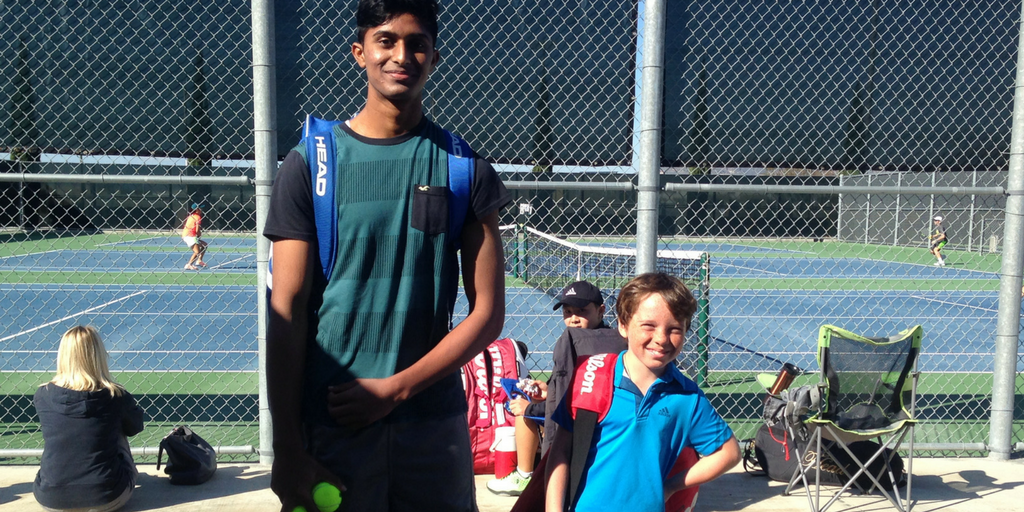"An extraordinary match at a January youth tournament in San Diego pitted a fourth grader against a boy literally twice his size—and demonstrated the power of level-based play."This was level-based play at its best. It worked extremely well at this tourney, which sorted its 26 entrants into five flights. Overall there were 39 matches, all of which took place between players with UTRs within 1.0 of each other—and about 75 percent of the matches proved competitive ones. (UTR defines a competitive match as one whose final score is 6-3, 6-4, or closer. In junior tournaments or high-school play, only 20-30 percent of matches typically reach this competitive threshold.) In San Diego, almost half of the matches took three sets to settle; the event used a 10-point tiebreaker as the third set to keep the contests to a reasonable length. “The goal was to schedule a minimum of three matches with players closest to their UTR,” says tournament director Jackson Chu (known as “Coach Jackson”), who mentors the Del Norte tennis team, “regardless of age or gender. Parents love the format.” By using both compass draws and round-robin play, Coach Jackson could provide those three competitive matches to the young athletes, who ranged from eight to 18 years in age, with UTRs up to 7.5. It gave the youngsters more good tennis than the single-elimination format, which often results in a “one and done” experience—frequently after considerable travel and expense. “Some of my kids play USTA tournaments on weekends,” Coach Jackson explains, “and often end up in uncompetitive matches—they either get blown out, or crush somebody who can’t match up with them. UTR makes for much more even competition.” UTR’s magic worked across gender barriers as well as ones of age and size. In Flight 2, for example, three boys mixed it up with three girls, all six players within 1.0 of each other. Just as in the tournament as a whole, 75 percent of the contests proved competitive, with 46 percent decided by third-set tiebreakers.”That’s the kind of competition that really promotes and enhances player development,” says Coach Jackson. Want UTR to help you organize your next event around level-based play? Just visit the UTR Events page to get started.

David vs. Goliath in California
Craig Lambert
It looked like one of those unlucky draws that pit two mismatched opponents against each other. On Martin Luther King’s birthday weekend (January 14-16), at the San Diego MLK Tournament at Del Norte High School, a fourth grader, ten-year-old Sasha Kremliovsky, walked out to play high-school sophomore Shanthanu Saravanan of the Del Norte team. Saravanan was seeded second among eight players in Flight 3 of the event. And at six feet tall, he was almost twice the size of Kremliovsky, who came in at four feet nothing.
That didn’t matter, because this tournament applied Universal Tennis Ratings (UTR) to organize each of its five flights. Athletes of similar tennis skill would populate each flight, regardless of their age, sex—or height. Sasha had a UTR of 4.5 and Shanthanu’s was 5.0. Since they were within 1.0 of each other in their UTRs, the system predicts a competitive match. And indeed it was. After two sets, the four-foot fourth grader had outlasted the six-foot high-schooler, 6-3, 7-5. In fact, Sasha’s consistency in hitting high and deep took him all the way to the Flight 3 final.

